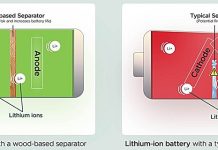
We all know that things behave differently in cold weather.
For instance, water freezes into ice.
In the world of physics, something even more exciting can happen when it gets extremely cold: certain materials can become superconductors! Superconductors are special materials that allow electricity to flow without any resistance, which means there’s no energy lost as heat.
To understand how this works, we’ll have to delve into some pretty cool science.
Scientists have known for a while that a switch can occur in these materials under very chilly conditions. This switch is called a “nematic transition,” and it’s the key to turning on their superconducting powers.
But what makes this switch flip in the first place? Scientists have been trying to find out because understanding this could lead to even better superconductors and potentially transform how we use electricity.
Recently, physicists at MIT made a breakthrough in our understanding of this switch in a particular superconductor made of iron selenide (FeSe).
This flat, 2D material can become a superconductor at temperatures as high as -300 degrees Fahrenheit (or 70 Kelvin in scientific terms), which is actually a lot warmer than most superconductors!
This is exciting because the warmer a superconductor works, the more useful it could be in real life.
Superconductors could help make better MRI machines or even allow us to build trains that float on magnets! But before we can do this, we need to understand what flips the superconducting switch in iron selenide.
In the past, scientists thought this switch happened when atoms in these materials suddenly change their magnetic direction in a coordinated way. But the MIT team discovered that iron selenide switches in a completely different way.
Instead of the atoms’ magnetic spins changing, the energy levels of the atoms change collectively. This finding suggests that there are new ways to find superconductors that we haven’t even thought of yet!
This discovery has reshaped our understanding of what triggers this superconducting switch, opening up new pathways to find unconventional superconductors.
So, what did the scientists do exactly? They physically stretched iron selenide samples using a strip of titanium and observed what happened to the atoms inside.
They noticed that as they stretched the material, the atoms’ energy levels, or “orbitals,” shifted in a coordinated way, signaling the start of the superconducting state.
In simple terms, think of orbitals like different lanes on a highway that electrons can choose to drive on. Normally, electrons can randomly choose a lane, but in the case of stretched iron selenide, they started to choose one particular lane more often. This discovery points to a new way that a superconducting state can be switched on, which is quite an exciting find!
This breakthrough means that there are different ways that this superconducting switch can happen, and that understanding this could be the key to finding new superconductors.
Now, that’s a pretty cool thought to keep us warm, even as we’re talking about temperatures colder than the Antarctic winter!



